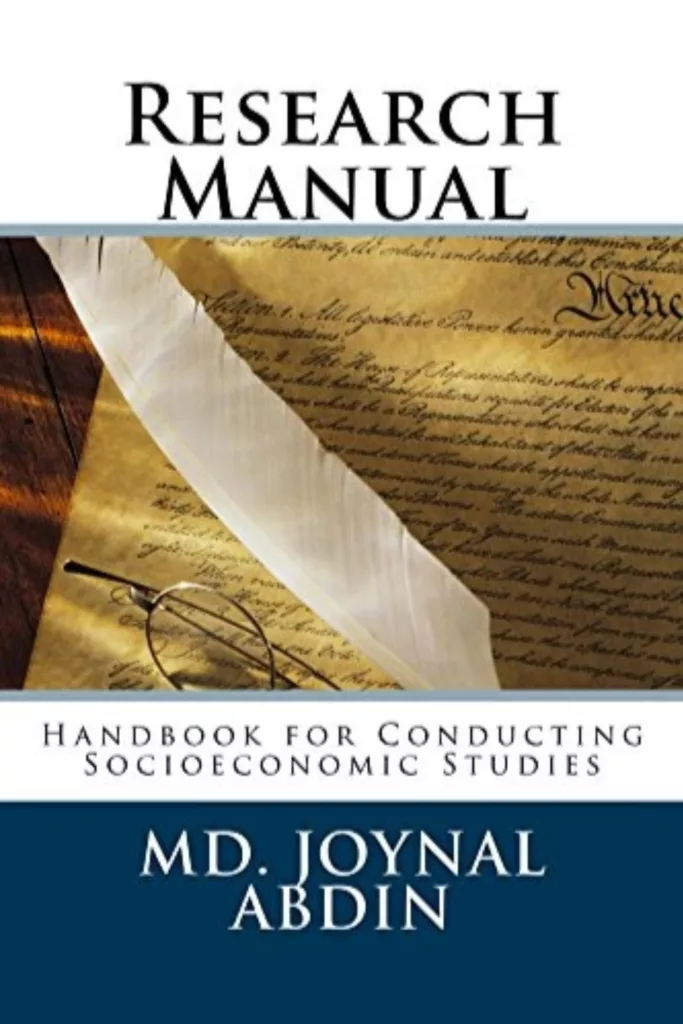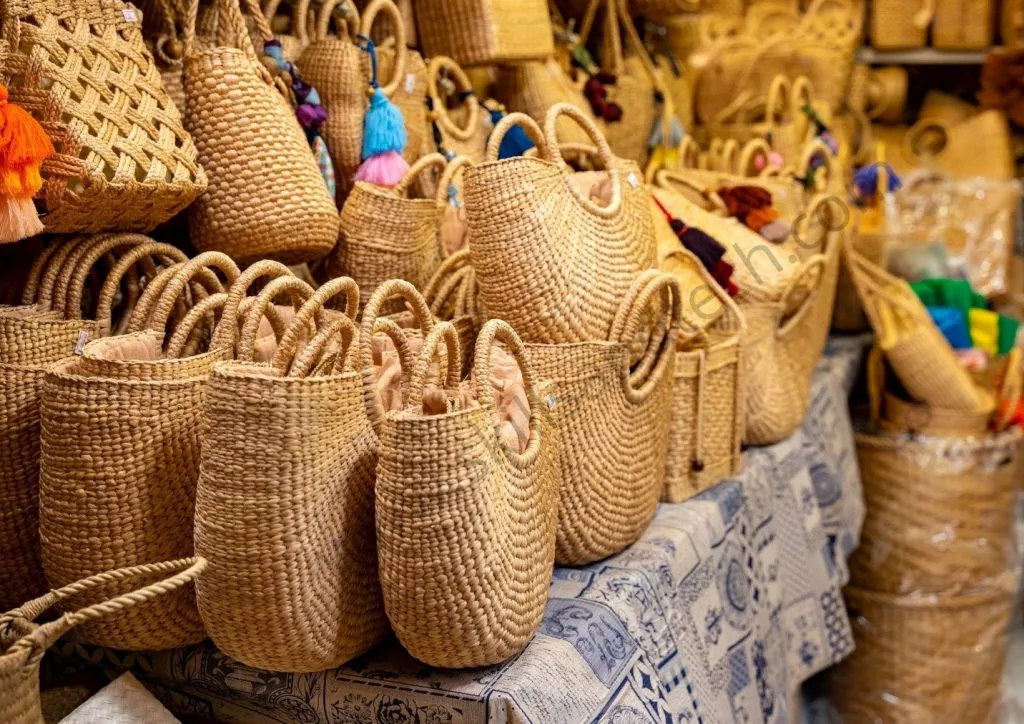FDI Opportunities in Bangladesh
Compiled from the speeches of one of
the Former Presidents of FBCCI
Sharp decline in the availability of Official Development Assistance (ODA) and limitations of capital formation and export earnings, the need for Foreign Director Investment (FDI) has become a major issue. Government policies tried to induce foreign investments not only for capital formation but also to acquire technology and management skills besides having access to the export markets. The balance of trade is always against Bangladesh. In 2001-02, Bangladesh export was only US$ 5986 million and import US$ 8540 million, the balance of trade being US$ 2554 million against Bangladesh. To reduce this trade gap, it is highly required to increase country’s industrial growth for enhancing its export earnings. Being deficient capital like many other developing countries, Bangladesh needs substantial foreign direct investment for attaining sustained economic growth along with for developing its industrial base and poverty reduction.
Bangladesh is a country of about 138 million people. It has an area of 1,47,570 square kilometer. Situated as Bangladesh is on the delta region of three mighty rivers- the Ganges, the Brahamaputro and the Meghna much of the country’s land areas has been build up from alluvial deposits brought down by the major rivers.
Bangladesh has been maintained steady economic growth rate at around 5% during the last ten years. There is a target to increase this growth rate at 5.7% in the next year and in medium-term 7%. In the year 2002-2003, the domestic savings rate was about 18.23%, GDP at current market price was about US $ 51.90 billion, annual per capita GDP US$ 389, growth rate 5.3%, industrial growth rate at constant price 6.62%, inflation rate: 5.2%, investment rate:23.2% of GDP, contribution at agriculture & forestry :18.23% of GDP, and exports : US$ 6548.44 million. The foreign exchange reserve on June 30, 2003 amounted to US$ 2100 million and prime bank rate of Bangladesh (since reduced to 5%) was 6% in June 2003.
Although there may be some constraints, there are plenty of opportunities for investment in Bangladesh. Bangladesh has huge volume of natural and agricultural resources. There are substantial deposits of coal and gas in the country and these are important raw materials for many industries. But Bangladesh has not yet been able to exploit these resources for lack of technology and investment. The potential of agro-based industries has not been properly utilized. The country has a variety of fruits and agricultural products, which provide the basis for agro-based industries. Even our marine resources are grossly under-exploited. Because of low wage bills and input costs, Bangladesh is an excellent place for both labour intensive and high-tech industries. Bangladeshi workers have demonstrated their skill and adaptability to support modern production techniques.
Private investment from overseas sources is welcome in all areas of the economy including SMEs with the exception of only five industrial sectors (reserved for public sector). Such investments can be made either independently or through joint venture on mutually beneficial terms and conditions. In other words, 100% foreign direct investment as well as joint venture both with local private or with public sponsors is allowed. Foreign investment, however, is specially desired in the following categories:
– Export-oriented industries;
– Industries in the Export Processing Zones (EPZs);
– Undertakings in which more diversified use of indigenous natural resources is possible;
– Basic industries based mainly on local raw materials;
– Investment towards improvement of quality and marketing of goods manufactured and/or increase of production capacities of existing industries; and

Labour-intensive/technology-intensive/capital-intensive industries.
From 1991-92 to December, 2001-02, the total investment was US$ 21,650 million against the registered projects under Board of Investment (BOI) of Bangladesh. Domestic investment registered in 1991-92 was US$ 116 million, which has been increased to US$ 1,835 million in 2001-02. The major five countries higher in investment are : USA (US$ 3270.21 million), UK (US$ 1044.25 million), Hong Kong (US$ 755.82 million), Singapore (US$ 547.13 million) and Norway (US$ 519.17 million). The major invested sectors are: Service, Chemicals, Textiles, Food & food related industries, Glass & ceramics and energy based projects.
A number of multinational companies are operating in Bangladesh for many years and as a result of the government’s liberal investment policies, a number of foreign entrepreneurs are showing interest in investment in Bangladesh. During the year 2001-2002, BOI has registered 296 foreign investment projects involving a total investment of US $ 275.15 million. The Bangladesh Export Processing Zones Authority (BEPZA) approved 136 investment projects with an investment of US$ 84.39 million.
| FDI Components | BOI
Registered |
BEPZA
Approved |
Total | Adjusted
Total |
| 1. Equity | 131.57 | 48.34 | 179.90 | 179.90 |
| a. Capital Machinery | 61.48 | 26.60 | 88.08 | 88.08 |
| b. Cash | 70.09 | 21.74 | 91.83 | 91.83 |
| 2. Reinvestment | 104.34 | 5.43 | 109.77 | 78.44 |
| 3. Intra-Company Borrowing | 39.25 | 30.63 | 69.87 | 69.87 |
| Total FDI Inflow in 2002 | 275.15 | 84.39 | 395.54 | 328.22 |
Figure: Summery of FDI in Bangladesh in 2002 ( in million US $)
| Sector | Units
No. of projects |
Investment
In Million US $ |
| Service | 77 | 154.59 |
| Chemicals | 66 | 51.48 |
| Engineering | 34 | 33.91 |
| Agro-based | 24 | 17.14 |
| Textile | 64 | 12.44 |
| Tannery & Rubber | 8 | 2.19 |
| Glass & Ceramics | 5 | 2.11 |
| Food & allied | 9 | 1.27 |
| Miscelleneous | 9 | 0.02 |
| All Sector Total | 296 | 275.15 |
Figures: FDI Inflow 2002 by major sectors (excluding EPZs)
| Source/Country | Percentage share of total FDI |
| South East & South East Asia | 45% |
| European Union | 12% |
| Other Europe | 20% |
| North America | 17% |
| Japan | 5% |
| West Asia & Others | 1% |
Figure: FDI inflow 2002 by Sources/ Country (excluding EPZs)
Under the Mid-term Strategic Plan 2003-2006, BOI targets US$ One billion FDI in different sectors emphasizing manufacturing and physical infrastructure.
The Government is also keen to expand industrial base of the economy and encourage both domestic and foreign investment in the industrial sector. In 2001-02, GDP growth in this sector was about 5%.

BOARD OF INVESTMENT (BOI)
The Government of Bangladesh established the Board of investments (BOI) in 1989 for accelerating private investment in Bangladesh. The Board is headed by the Prime Minister of the Republic.
The major functions of Board of Investment (BOI) include the followings:
- Undertaking investment promotion activities at home and abroad providing all types of facilities for promotion of capital investment and rapid industrialization.
- Registration of industrial projects as well as royalty, technical know- how and technical assistance agreements wherever required.
- Approval of payment of royalty, technical know-how and technical assistance fees to foreign nationals/organizations beyond the prescribed limits.
- Issuing work permit to expatriate personnel working in private sector industrial enterprises.
- Providing import facilities to industrial units in the private sector Approval of the terms and conditions of foreign private loan and supplier’s credit.
- Allotment of land in the industrial areas / estates for industrial purpose Conciliation of disputes relating to foreign investors and
- Providing assistance to avail infrastructure facilities for industries.
INCENTIVES AND FACILITIES FOR THE INVESTORS
To attract foreign direct investment, the Government of Bangladesh has offered most liberal package of investment facilities and incentives.
Tax holiday: Tax holiday facilities will be available for 5 or 7 years depending on location of the industrial enterprise. Tax holiday facilities will be provided in accordance with the existing laws.
Accelerated depreciation: Industrial undertakings not enjoying tax holiday will enjoy accelerated depreciation allowance. Such allowance is available at the rate of 100 per cent of the cost of the machinery or plant.
Concessionary duty on imported capital machinery: Import duty, at the rate of 5% ad valorem, is payable on capital machinery and spares imported for initial installation or BMR/BMRE of the existing industries.
Rationalization of import duty: Duties and taxes on import of goods which are produced locally will be higher than those applicable to import of raw materials for producing such goods.
Incentives to Non-Resident Bangladeshis (NRBs): Investment of NRBs will be treated at par with FDI. Special incentives are provided to encourage NRBs for investment in the country. NRBs will enjoy facilities similar to those of foreign investors.
Other incentives:
- Tax exemption on royalties, technical know-how fees received by any foreign collaborator, firm, company and expert.
- Tax exemption on the interest on foreign loans under certain conditions.
- Avoidance of double taxation in case of foreign investors on the basis of bilateral agreements.
- Exemption of income tax up to 3 years for the foreign technicians employed in industries specified in the relevant schedule of income tax ordinance.
- Tax exemption on income of the private sector power generation company for 15 years from the date of commercial production.
- Facilities for full repatriation of invested capital, profit & dividend
- 6 months’ multiple entry visa for the prospective new investors.
- Re-investment of repatriable dividend treated as new investment.
- Citizenship by investing a minimum of US$5,00,000 or by transferring US$10,00,000 to any recognized financial institution (non-repatriable).
- Permanent residentship by investing a minimum of US$ 75,000 (non-repatriable)
- Tax exemption on capital gains from the transfer of shares of public limited companies listed with a stock exchange.
- Special facilities and venture capital support will be provided to export-oriented industries under “Thrust sectors” .
There will be no discrimination in case of duties and taxes for the same type of industries set up by foreign and local investors and in the public and private sectors.
Incentives to export-oriented and export-linkage industries: Export-oriented industrialization is one of the major objectives of the industrial Policy 1999. Export-oriented industries will be given priority and public policy support will be ensured in this respect. An industry exporting at least 80% of its manufactured goods or an industry contributing at least 80% of its products as an input to finished exportable, and similarly, a business entity exporting at least 80% of services including information technology related products will be considered as an export-oriented industry. To make investment in 100 per cent export-oriented industries, the following incentives and facilities will be provided:
- Duty free import of capital machineries and spare parts upto 10 percent of the value of such capital machinery will continue.
- Existing facilities for Bonded Warehouse and back-to-back Letter of Credit will continue.
- The system for duty drawback will be further simplified and to this end, duty drawback will be fixed at a flat rate on exportable and potentially exportable goods. Exporter will receive duty drawback at a flat rate directly from the relevant commercial banks.
- The arrangement for providing loans up to 90 percent of the value against irrevocable and confirmed Letter of Credit/ Sales Agreement will continue.
- To ensure backward linkage, incentives will be extended to the “deemed exporters” supplying indigenous raw materials to export-oriented industries. Export-oriented industries including export-oriented RMG industries, using indigenous raw materials will be given facilities and benefits at prescribed rates.
- The export-oriented industries, further to the provisions of Bangladesh Bank foreign exchange regulations, will be entitled to receive additional foreign exchange, on case-to-case basis, for publicity campaign, opening overseas offices and participating in international trade fairs.
- The entire export earnings from handicrafts and cottage industries will be exempted from income tax. For all other industries, income tax rebate on export earnings will be given at 50 percent.
- The facility for importing raw materials, which are included in the banned/ restricted list, but required in the manufacture of exportable commodities, will continue.
- The import of specified quantities of duty-free samples for manufacturing exportable products will be allowed consistent with the prevailing relevant government policy.
- The local products supplied to local industries or projects against foreign exchange payment or foreign exchange L/C will be treated as indirect exports and be entitled to all export facilities.
- The Export Credit Guarantee Scheme will be further expanded and strengthened.
- 10 percent products of the enterprises, located in both public and private EPZs will be allowed to be exported to domestic tariff area against foreign currency L/C on payment of applicable duties and taxes.
- 100 % percent export-oriented industry outside EPZ will be allowed to sell 20% percent of their products in the domestic market on payment of applicable duties and taxes.
Apart from the above-mentioned facilities, other facilities announced and provided in the Export Policy will be applicable to export-oriented and export-linkage industries.

Export Processing Zones (EPZs)
Export Processing Zones are considered by the foreign investors as an ideal location for the export-oriented industries. In Bangladesh, the Export Processing Zones with necessary infrastructural facilities offer very attractive incentives. Export Processing Zones in Chittagong and Dhaka provide necessary fiscal, non-fiscal and infrastructure facilities for export-oriented enterprises. Four more Export Processing Zones in Mongla, Ishurdi, Comilla and Syedpur (Nilphamari) are under implementation.
EPZ in the private sector
The Government enacted “The Bangladesh Private Export Processing Zones Act 1996” allowing setting up of Export Processing Zones in the private sector with a view to attracting more investment especially foreign investment in the country. Accordingly, quite a good number of private EPZs have been registered. The first private EPZ by a Korean company in Chittagong has already been implemented.
Bilateral Investment Guarantee Agreement has been signed with a number of countries. Bangladesh is a signatory to the Multilateral Investment Guarantee Agency (MIGA), Overseas Private Investment Corporation (OPIC) of USA, International Centre for Settlement of Industrial Disputes (ICSID) and is a member of the World Intellectual Property Organization (WIPO). It has already signed agreements with a number of countries for avoidance of double taxation. Besides, Bangladesh enjoys quota free and duty-free market access into EU, Canada, Japan, Australia and Norway. This offers a tremendous opportunity to the foreign investors to set up production facilities in Bangladesh targeting those lucrative markets.
PRIVATIZATION PROGRAMME
Government has already undertaken a large-scale Privatization Programme and the Privatization Board has been reorganized appointing a reputed private businessman as its head. Disinvestment programmes of public enterprises are at hand. Foreign investors and expatriate Bangladeshis are encouraged to purchase such industrial units.
POTENTIAL SECTORS FOR INVESTMENT
The major potential sectors including “Thrust Sectors” identified by the Bangladesh Government, which offer probable choices for investment are:
1. Textiles: Being labour-intensive it is the most comparative advantage sector in Bangladesh. The captive demand of over 2.5 billion meters of fabrics of the burgeoning ready-made garments industries which are currently being met from imports and domestic unmet demand of about 280 million meters offer enormous potential for setting up backward linkage industries. Composite textile mills with modern dyeing and finishing facilities have excellent prospects.
2. RMG and Knitwear: High fashion readymade garments (RMG) and knitwear are identified as thrust sector in Bangladesh. This sector has a great potential for FDI along with general RMG and knitwear.
3. Energy (Power Generation and Transmission) : In view of the gradual widening of supply gap and pursuant to the policy of privatization the Government has recently opened the energy sector to private investment.
4. Natural Gas: Bangladesh is endowed with large deposits of Natural Gas. Gas being the major source of energy for power generation, fertilizer factories, commerce, industries and domestic use, its exploration and development is a high priority for the country.
5. Telecommunication: The all-pervasive influence of the recent revolution in information technology on the telecommunication sector has opened up a new vista for private investment. This is a highly potential area not only because the possibilities and potentialities are immense, but also because there is a ready market of eager clients in the country. This sector has been opened to private investment.

6. Fisheries: There is large domestic demand for fish and foreign markets are sizable and ever growing because of its proven superiority over meat proteins. Given extensive coastlines, large water bodies and excellent climatic conditions, the potential for fisheries development including hatcheries in Bangladesh is enormous.
7. Agro-based Industries: Bangladesh enjoys the basic attributes for successful agro-based industries namely, rich alluvial soil, a year-round frost-free environment, adequate water supply and an abundance of cheap labor. Increased cultivation of vegetables, tropical fruits, spices now grown in Bangladesh could feed agro-processing industries for both domestic and export markets. Floriculture can also be developed to meet export demand.
8. Electronics: Already a number of overseas electronics companies have established technical collaboration with Bangladeshi counterparts to produce electronic gadgets at competitive prices. But these are mostly assembling plants. The creation of feeder industries to supply parts such as transformers, fuses, printed circuit boards and coils to existing electronic operations has begun in a limited sale. The development and expansion of these and other areas offer large investment opportunities for the manufacture and export of electronic components and products.
9. Computer Software Development and Data Entry: The revolution in the information technology facilitating computerized global networking has opened tremendous opportunities for the highly labor-intensive computer software development and data entry in Bangladesh. There is a large pool of educated girls and young man who can be easily trained to man these ventures.
10. Leather and Leather Goods: Bangladesh leather is of compact fiber structure and fine grains. Available quality hides can support a variety of increased value-added products such as jackets, garments, gloves, shoes, wallets, handbags, watch bands etc.
11. Light Industries: Light industries of Bangladesh produce variety of labor-intensive goods including toys, consumer durables, small tools, and paper products for a large domestic market. Further development of these industries offers large investment opportunities. Some export oriented light industries have already been established by entrepreneurs from Hong Kong. Japan and Korea taking advantage of cheap and easily trainable local labor and available infrastructure facilities in EPZs. There is enormous potential for expansion of capacity in this sub-sector.
Besides, there are other potential areas for investment in Bangladesh, such as: dairy farming & dairy products, poultry farming & poultry products, jute goods, paper and pulp, cement, sheet and plate glass, etc. The government also welcomes investments in the development of port facilities and industrial parks.
Most of the foreign investors consider the investment potentials in Bangladesh to be bright and many of them would like to explore further the possibilities of investments either on their own or in partnership with local entrepreneurs and the incentives for foreign investors are quite attractive. They highly appreciate the policies of the present government for liberalization, private sector driven, and market led growth in the economy.


